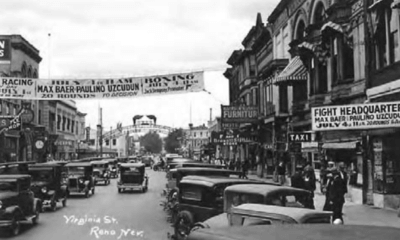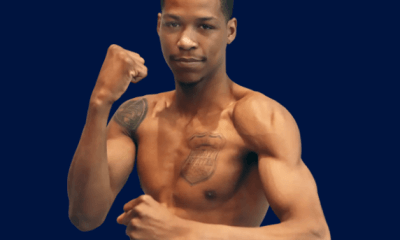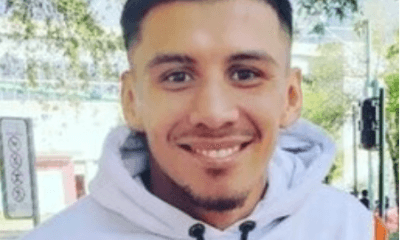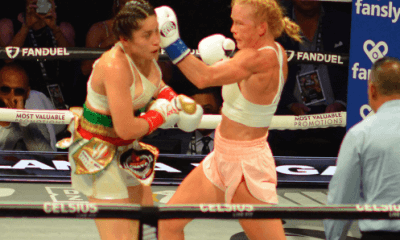Featured Articles
I Still Think That Anthony Joshua Should Retire From Boxing
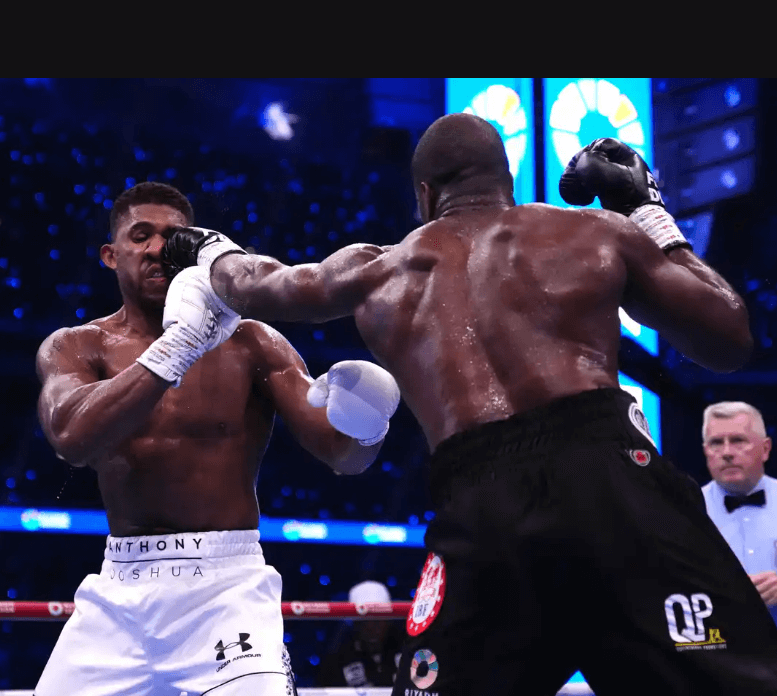
On May 2, 2023, an opinion piece I wrote for The Guardian ran beneath the headline “The Bravest Thing Anthony Joshua Can Do is Retire from Boxing.” https://www.theguardian.com/sport/2023/may/02/anthony-joshua-boxing-retirement
The article was written after Joshua’s lackluster performance against Jermaine Franklin one month earlier. It noted that AJ had accumulated generational wealth so that it was no longer an economic imperative for him to box. It acknowledged that I had no knowledge then (nor do I now) of any MRI or other test result indicating that AJ has the beginnings of brain damage and that my knowledge of him comes largely from watching him at a distance and talking with people who know him far better than I do. “From the little I know,” I added, “I like him. In addition to being a man of elegance and grace, he seems like a good person.”
The article also revisited Joshua’s losses to Andy Ruiz and Oleksandr Usyk (twice) coupled with his apparent decline as a fighter and made the point, “No sport exacts a physical toll on its practitioners the way boxing does. [And] the hard truths of boxing are cause for any fighter to be concerned. Getting hit in the head again and again causes brain damage. Getting hit in the head by a heavyweight boxer is likely to cause more brain damage. The only question is: ‘How much?’ Moreover, the symptoms caused by repeated blows to the head progress steadily long after a fighter has retired from boxing. [And] the most difficult aspect of chronic brain injuries lies in the fact that, by the time a fighter is showing symptoms, it’s too late. The condition is largely irreversible.”
Reaction to the article was swift. Eddie Hearn (who as Joshua’s promoter has a huge financial interest in AJ continuing to fight) declared, “What a f****** joke. I’m just gonna say it, Thomas Hauser needs to retire. He’s so far detached from reality. What the f*** are these people talking about? Thomas Hauser is a disgrace for writing that. Honestly, I found that article disgusting.”
More statements from Hearn followed, leading to headlines that read, “Hearn Blows a Gasket Over Joshua Retirement Article . . . EDDIE HEARN ABSOLUTELY RAGING at Guardian Writer . . . Eddie Hearn Slams Reporter for Wanting Joshua to Retire . . . Eddie Hearn LOSES IT.”
In the year that followed, Joshua scored highlight-reel knockouts of Robert Helenius and Francis Ngannou and a fifth-round stoppage without a knockdown of Otto Wallin. Assessing AJ’s four post-Usyk opponents, Carl Froch (who calls things like he sees them) labeled the opposition “four people who were coming to the ring, not really looking to beat AJ. They were there to get paid. That’s all they wanted.”
But Joshua seemed to have rediscovered his confidence. He was, the marketers told us, a new and improved version of the fighter once touted as the future of boxing. With Tyson Fury and Deontay Wilder struggling and Usyk looking vulnerable despite continuing to win, there was talk that AJ might now be the best heavyweight in the world.
Then Joshua fought Daniel Dubois. AJ was knocked down four times in five rounds and on two occasions was saved by the bell. Not even the refereeing of Marcus McDonnell (who allowed AJ to hold incessantly and deducted a point from Dubois for an inadvertent low blow) could save Anthony from disaster.
The end was presaged in round one when Joshua backed toward the ropes with his left hand down. Dubois whacked him with an overhand right that sent AJ to the canvas. He rose on wobbly legs and for the rest of the fight – to quote Froch again – “got absolutely battered from pillar to post.” In round five, he was counted out.
If Joshua had won the way Dubois did, people would be saying it was a great performance. Now people are saying it was a great fight. It wasn’t a great fight. It was a dramatic fight because of the personalities, the scene, and the stakes involved. As a sporting competition, it was a one-sided beatdown.
So let’s revisit the question: “Should Anthony Joshua retire from boxing?”
AJ will be 35 years old on October 15. Any money he might make from boxing in the future would look nice on a balance sheet but won’t change his life. Immediately after losing to Dubois, he declared, “Of course, I want to continue fighting.” The following day, he posted on social media, “It’s far from over yet. We’ve done it once. We’ve done it twice. Doing it a third time hasn’t been easy, but I believe it’s something that I can achieve.”
And of course, Eddie Hearn was quick to say, “We have another fight with Riyadh Season and Turki Alalshikh, and Daniel Dubois is part of that plan. But so too could be Tyson Fury or another heavyweight.”
And yes; Joshua-Fury could fill Wembley regardless of whether either man has a title. So could Joshua vs. Deontay Wilder and Dubois-Joshua II.
But consider the following.
According to CompuBox, Dubois punched AJ in the head 69 times. Let me repeat that number. Dubois punched AJ in the head 69 times. The effects of multiple blows to the head and concussions (AJ may have been concussed as well) add up over time. That’s not even considering possible organ damage caused by the body blows that Dubois landed. And it’s not just the fights that damage fighters. Fighters are hurt by punches in the gym too.
“I can’t see a future now for Anthony Joshua,” Froch opined after Joshua-Dubois. “AJ’s punch resistance looks like it’s gone. His powers of recovery are awful. I question his desire to be in that ring anymore. He’s made his money. He shouldn’t be boxing.”
“AJ should retire,” Barry McGuigan added, “His punch resistance has evaporated and he will destroy his previous achievements by carrying on. When your ability to hold a shot goes, it never comes back. Time for AJ to exit.”
When Lennox Lewis announced his retirement twenty years ago, he declared, “Deciding to end my career as a professional boxer was not an easy decision to make. I’ve been offered millions of dollars to fight again, which is all the more tempting because I believe that there are more championship-quality fights left in me. In many ways, continuing to fight would be the easiest course of action. That said; I am mindful of what happens to fighters in and out of the ring as they age.”
I’ll also repeat what I wrote one year ago: “Anthony Joshua has already gotten everything that’s important and good that he can get from boxing. The sport will never again be as kind to him as it was on the night he beat [Wladimir] Klitschko. There’s no supervening reason for him to keep getting punched in the head and adding to the risk of long-term brain damage. There’s so much outside the ring that he can offer.”
We know AJ is brave. We know AJ is a warrior. And we know AJ is getting punched in the head too much.
“But what about AJ’s legacy,” you might ask. “Wouldn’t another championship solidify his place in ring history?”
Let’s give the final word on that subject to Joshua himself. Several days before my call for AJ to retire ran in The Guardian last year, he gave a speech at the Under Armour Next Academy in London.
“In boxing,”Joshua told the young adults in attendance, “people walk in the gym one way and not many walk out the same way because of the trauma and the stuff they put their body through. I want my legacy to be, I walked out healthy. Imagine me at the age of fifty or sixty in a wheelchair – fragile because of the trauma I put my body through. My legacy should be when I’m old, I’m still fresh. I want people to say, ‘Oh wow, he still looks good, he still looks after himself.’ That’s a legacy.”
Thomas Hauser’s email address is thomashauserwriter@gmail.com. His most recent book – MY MOTHER and me – is a personal memoir available at Amazon.com. https://www.amazon.com/My-Mother-Me-Thomas-Hauser/dp/1955836191/ref=sr_1_1?crid=5C0TEN4M9ZAH&keywords=thomas+hauser&qid=1707662513&sprefix=thomas+hauser%2Caps%2C80&sr=8-1
In 2019, Hauser was selected for boxing’s highest honor – induction into the International Boxing Hall of Fame.
To comment on this story in the Fight Forum CLICK HERE
-

 Featured Articles3 weeks ago
Featured Articles3 weeks agoAvila Perspective, Chap. 330: Matchroom in New York plus the Latest on Canelo-Crawford
-

 Featured Articles2 weeks ago
Featured Articles2 weeks agoVito Mielnicki Jr Whitewashes Kamil Gardzielik Before the Home Folks in Newark
-

 Featured Articles4 weeks ago
Featured Articles4 weeks agoAvila Perspective, Chap 329: Pacquiao is Back, Fabio in England and More
-

 Featured Articles4 weeks ago
Featured Articles4 weeks agoOpetaia and Nakatani Crush Overmatched Foes, Capping Off a Wild Boxing Weekend
-

 Featured Articles3 weeks ago
Featured Articles3 weeks agoCatching Up with Clay Moyle Who Talks About His Massive Collection of Boxing Books
-

 Featured Articles4 weeks ago
Featured Articles4 weeks agoFabio Wardley Comes from Behind to KO Justis Huni
-

 Featured Articles2 weeks ago
Featured Articles2 weeks agoMore Medals for Hawaii’s Patricio Family at the USA Boxing Summer Festival
-

 Featured Articles3 weeks ago
Featured Articles3 weeks agoThe Shafting of Blair “The Flair” Cobbs, a Familiar Thread in the Cruelest Sport



